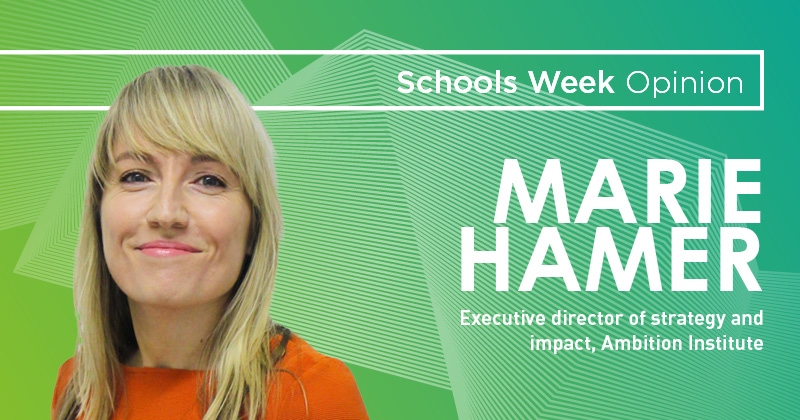The past few months have seen education back in the headlines as the children’s wellbeing and schools bill makes its way through the parliamentary process, Ofsted shares its new framework, and the department for education publishes its new school improvement model.
Education is a hotly contested space, and so it should come as no surprise that these developments have produced heated debates. But one thing on we can all agree is our collective desire to ensure high and rising standards in our education system.
This is one of the specific directives in the terms of reference for the curriculum and assessment review, which I have the privilege to lead.
But what do we mean when we talk about ‘standards’? We need to be clear about that when we use the term, both to guide the focus of educational policy and to avoid slippage into politicisation or empty rhetoric.
Standards broadly refer to a comparative level of quality. Fundamentally, educational standards concern outcomes for young people, arising from educational inputs.
For example, if we as a nation invest in providing young people with the high-quality knowledge and skills they need to be ready for life and work, we will be concerned with how many young people successfully gain this knowledge and skills, as indicated by qualifications and destination data.
Standards may also relate to the instruments of measurement and their application. For example, increasing numbers of young people passing an exam could simply indicate grade inflation, rather than rising standards.
It is the job of our national qualifications regulator, Ofqual to ensure that this isn’t the case, and that standards in national examinations and qualifications genuinely reflect young people’s knowledge, skills and understanding.
Rigorous measurement also enables comparative analysis of whether standards are high or low, rising or falling.
But, more often than not, talk of educational standards in day-to-day or political discourse tends to be focused on the crucial but more nebulous issue of what is, or should be, being tested and measured.
The socio-economic attainment gap remains unconscionably large
International assessment programmes are useful here, because they often test core elements that we collectively deem important, such as literacy (PIRLS and PIAAC), numeracy (PIAAC), or core subjects such as maths, science and national language (TIMSS and OECD PISA tests).
But while the subjects of maths, English and science that feature in these international comparisons are and will continue to be the core of our national curriculum, the standards debate comprises a wide range of other concerns and tropes that often become laden with significance.
Latin is one of these. Over the years, it has almost become a trigger word associated with a particular view of standards, albeit the rationale for placing such significance on it is less clear.
So, while we all agree on the need for an instrumental core of maths, English and science, it is important that we reflect on exactly what it is that we want our young people to learn and what knowledge and skills should comprise our conception of high standards.
There are limitations to international comparisons, but they can provide useful information about the performance of our young people relative to other nations. For example, England’s young people generally perform better than OECD averages and we have seen an upward trajectory on a number of these measures in recent years.
This reflects the collective hard work of policymakers, leaders, teachers and their pupils over the last quarter of a century, which has undoubtedly driven up standards in core subjects.
High attainers are well served, and the pipeline in STEM from school into higher education and work – which is vital for our economy – has been strengthened. All this should be celebrated.
But there also remain significant gaps and points of under-attainment. In practice, ‘high standards’ currently too often means ‘high standards for some’.
The socio-economic attainment gap remains unconscionably large in spite of efforts to reduce it by governments of all colours. The same is true for the progress gap for young people with SEND.
Our ambition is ‘high standards for all’. We must aim high, drive up standards for all our young people, and ensure that none are left behind. This is one of the most significant challenges facing the curriculum and assessment review, but it is also an immense opportunity, and one that we have embraced as we undertake our work.
It has been more than a decade since the last review of the national curriculum. Now is the time to engage in a mature public conversation about education and educational standards that is based on evidence, and which generates light rather than heat.
If we do that, we have the opportunity to refresh the curriculum and address some of the most significant present barriers to high standards for all.











